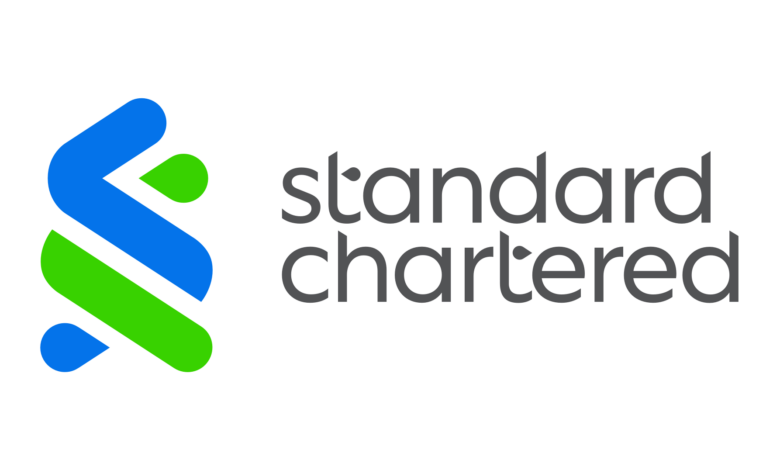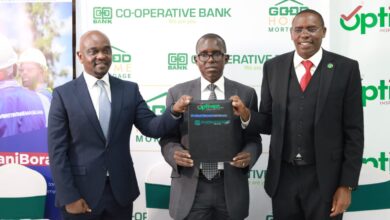
Standard Chartered Bank has positioned itself at the forefront of innovative financing solutions for Africa’s infrastructure development, with Managing Director and CEO Kariuki Ngari outlining the bank’s strategic approach to addressing the continent’s massive $130 billion annual infrastructure financing deficit through blended finance initiatives.
The Scale of Africa’s Infrastructure Challenge
Africa faces a staggering annual infrastructure financing gap of $130 billion, a figure that underscores the urgent need for innovative financial solutions beyond traditional public financing mechanisms. During the recent Africa Debate in London, Ngari emphasized that scaling the capital required to meet Africa’s infrastructure goals cannot be achieved through public financing alone, necessitating a strategic shift toward blended finance approaches that combine public and private capital.
The infrastructure deficit spans critical sectors including transportation, energy, digital connectivity, and urban development. This gap represents both a significant challenge and an unprecedented opportunity for financial institutions willing to develop innovative financing models that can attract private capital while managing risk effectively.
Standard Chartered’s Proven Blended Finance Track Record
Standard Chartered has demonstrated tangible success in implementing blended finance solutions across the continent. In 2024, the bank financed $4 billion worth of infrastructure projects in Africa, showcasing the effectiveness of its approach to combining public and private capital. These projects represent real-world applications of blended finance principles, moving beyond theoretical frameworks to deliver measurable impact.
The bank’s success stories include several landmark projects that illustrate the potential of blended finance mechanisms. In Côte d’Ivoire, Standard Chartered facilitated a €533 million financing package backed by the African Development Bank (AfDB) for the Ministry of Finance and Budget, supporting key projects under the country’s 2021-2025 National Development Plan. This partnership demonstrates how multilateral development institutions can work with commercial banks to reduce risks and unlock larger financing packages.
In Angola, the bank helped facilitate a €1.29 billion solar-powered electricity distribution programme designed to improve rural access to clean energy. This project exemplifies how blended finance can address multiple development objectives simultaneously, combining infrastructure development with climate action and rural development goals.
The Blended Finance Advantage
Blended finance mechanisms offer several advantages over traditional financing approaches. By combining public and private capital, these structures can reduce risk for commercial investors while maintaining market integrity and ensuring projects remain commercially viable. The “crowding in” effect of blended finance allows limited public resources to mobilize significantly larger amounts of private capital, creating a multiplier effect that maximizes development impact.
Ngari emphasizes that the bank is not waiting for perfect conditions but is actively building the right structures to connect ambition with capital. This proactive approach involves developing replicable frameworks that can attract institutional capital into critical sectors such as climate-smart infrastructure and value-added manufacturing, areas where Africa’s future economic growth potential is most significant.
The success of blended finance models in Africa aligns with broader global trends toward innovative development financing. Similar approaches have been successfully implemented by organizations like the Africa Digital Financial Inclusion Facility (ADFI), which uses blended finance to accelerate digital financial inclusion. These models demonstrate how public-private partnerships can address complex development challenges while maintaining commercial viability.
Climate Finance and Sustainable Development
Standard Chartered’s infrastructure financing strategy increasingly emphasizes climate finance, supporting projects that promote sustainable energy, reduce carbon emissions, and enhance climate resilience across Africa. This focus aligns with the bank’s global commitment to mobilize $300 billion by 2030 for climate-related projects.
The integration of environmental, social, and governance (ESG) principles into infrastructure financing reflects growing recognition that sustainable development requires holistic approaches addressing multiple objectives simultaneously. Climate-smart infrastructure projects can deliver environmental benefits while supporting economic growth and social development, creating win-win outcomes for investors and communities.
Recent examples of climate-focused financing include support for renewable energy projects and sustainable transportation systems. Companies like BURN have received significant funding for clean energy initiatives, such as the $5 million from the Electrification Financing Initiative (ElectriFI) to expand electric cooking solutions in Kenya. These projects demonstrate how blended finance can accelerate the transition to clean energy while addressing practical development needs.
Building Sustainable Financing Ecosystems
The development of effective blended finance mechanisms requires building sustainable financing ecosystems that can operate at scale. This involves creating institutional frameworks that support long-term partnerships between public and private sector actors, developing risk-sharing mechanisms that make projects bankable, and establishing governance structures that ensure accountability and transparency.
Standard Chartered’s approach emphasizes the importance of creating replicable models that can be adapted across different markets and sectors. The bank’s partnerships with multilateral development institutions like the African Development Bank provide templates for how commercial banks can work with public sector entities to develop innovative financing solutions.
The private credit market in Africa, estimated at $3 billion, represents significant untapped potential for infrastructure financing. Mid-market companies often find themselves in a financing gap, too large for microfinance but too small or risky for traditional banking. Blended finance mechanisms can help bridge this gap by providing flexible, tailored financing solutions that meet the specific needs of infrastructure projects.
Regional Integration and Economic Transformation
Infrastructure development through blended finance has the potential to drive regional integration and economic transformation across Africa. Projects like the Standard Gauge Railway in Tanzania demonstrate how infrastructure investments can reduce costs, improve connectivity, and enhance competitiveness across regional markets.
Digital infrastructure represents another critical area where blended finance can drive transformation. The rapid growth of Africa’s digital economy requires substantial investments in connectivity, data centers, and digital platforms. Organizations like the African Trade & Investment Development Insurance (ATIDI) have provided significant guarantees for infrastructure projects, such as the $84 million counter-guarantee for Rwanda’s New Bugesera International Airport.
Future Outlook and Strategic Priorities
The success of blended finance initiatives in Africa depends on continued innovation in financial instruments and partnership structures. Standard Chartered’s experience demonstrates that effective blended finance requires deep understanding of local markets, strong relationships with public sector partners, and the ability to structure complex financial arrangements that balance risk and return.
The $130 billion infrastructure financing gap represents both a challenge and an opportunity for African development. Through innovative blended finance approaches, institutions like Standard Chartered are demonstrating that it is possible to mobilize private capital for development objectives while maintaining commercial viability and market integrity.
As Africa continues to urbanize and industrialize, the demand for infrastructure financing will only increase. The success of current blended finance initiatives provides a foundation for scaling these approaches to meet growing demand while ensuring that infrastructure development contributes to inclusive, sustainable economic growth across the continent.






